Completion Rates
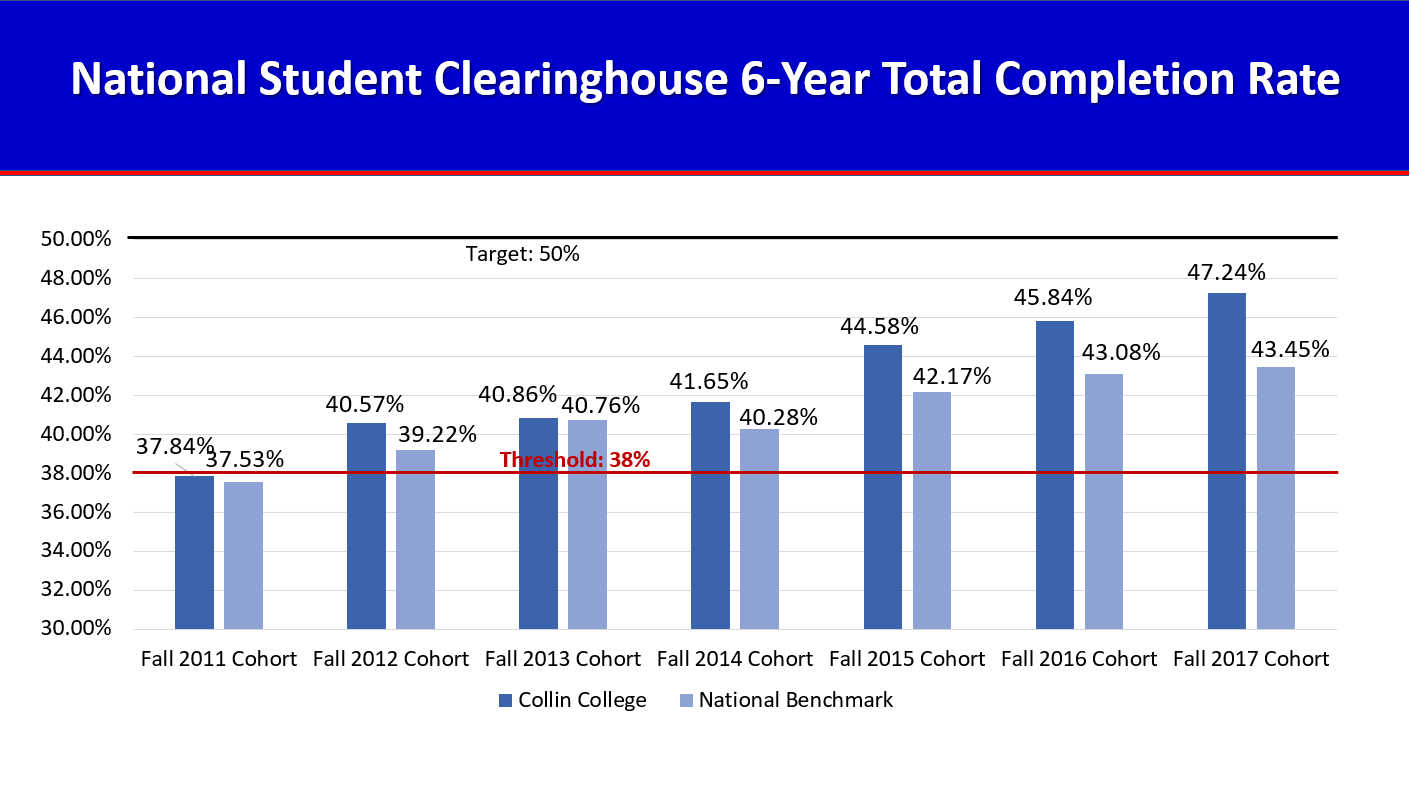
The preceding 6-Year Completion Rate chart is based on data from National Student Clearinghouse Institutional Benchmark Reports 2010-2016. The cohorts examined in these studies are made up of first-time degree-seeking students, of any age, who began their postsecondary studies in the fall term of the cohort year. The study followed the cohort through May 31st of the sixth academic year and highlights six-year student outcomes, including degree and certificate completion. Based on the changes to these calculations, Collin College focuses on the Fall 2011 cohort as the baseline. *According to the National Student Clearinghouse, starting in 2011, “there were three major changes from prior Completions reports with regards to how the cohort of first-time degree-seeking students were defined” (2011 Institutional Benchmark Report).
Program Licensure/Certification Pass Rates
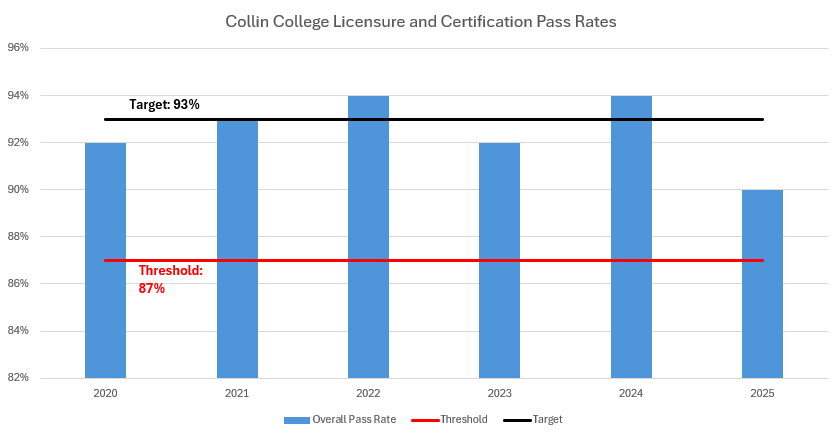
Persistence Rates
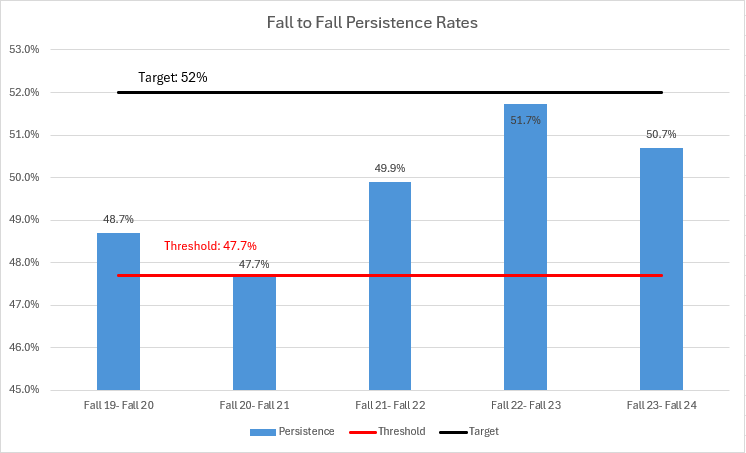
Collin College Fall-to-Fall Persistence Rates in the previous chart represents all
students who are enrolled in the fall term of the initial listed year, and what percent of them return for the fall term
of the second listed term (excluding graduates). Source: Collin College ZogoTech Data
Warehouse
Success Rates
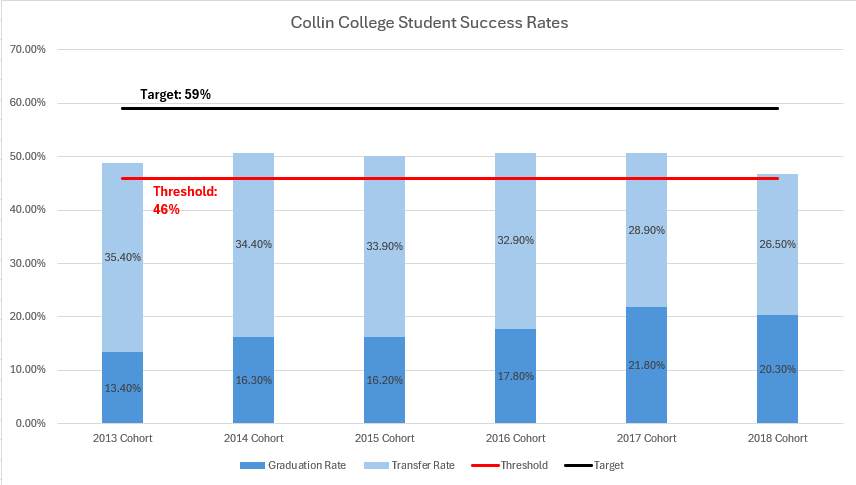
Sources: IPEDS Graduation Rate Surveys (GRS) for the respective years 2019-2022 and
Collin College Banner System for years 2021-2022.
Collin College Student Success Rates are calculated as the sum of the year’s graduation rate percentage plus the year’s transfer out rate percentage. While Collin College is currently offering 4 year degrees, these success rates utilize a 3 year graduation rate versus the IPEDS 6-year rate. The three-year graduation rate will continue to be used at least through 2027 when the College will have sufficient history reporting six-year graduation rates.
Total Credentials Awarded
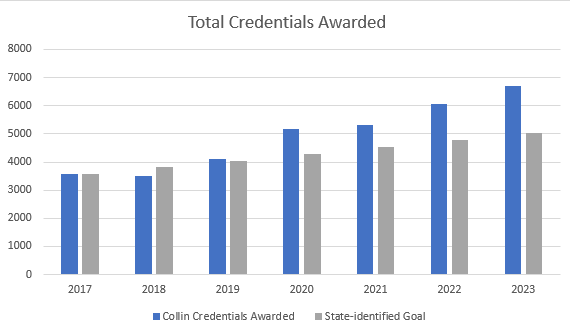
The 60X30TX program began in 2018 in the state of Texas and was based on the concept that if every higher education institution met its goal of increases in credential completion, Texas could have 60% of its population with a college credential by 2030. Collin College was charged with increasing our annual degree and academic certificate output by 241 additional students each year (cumulatively). Credentials awarded in 2017 was used as a baseline.
